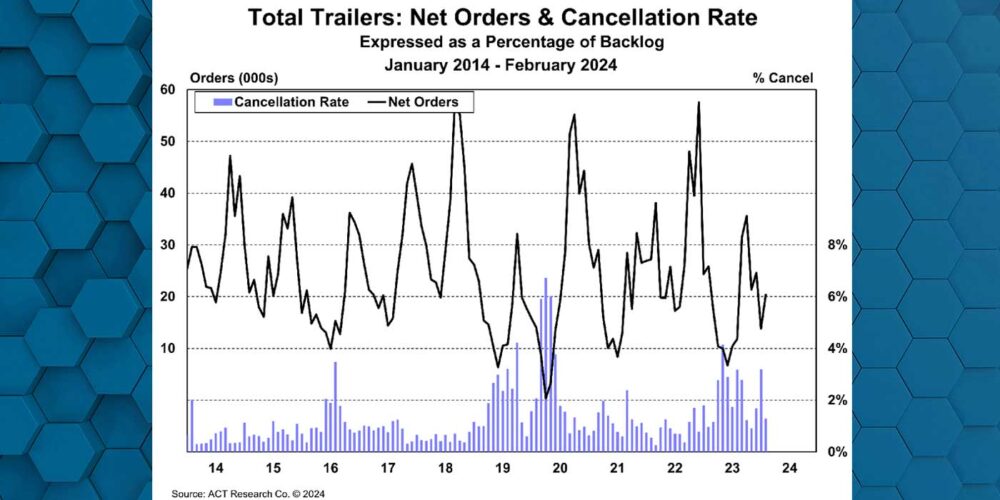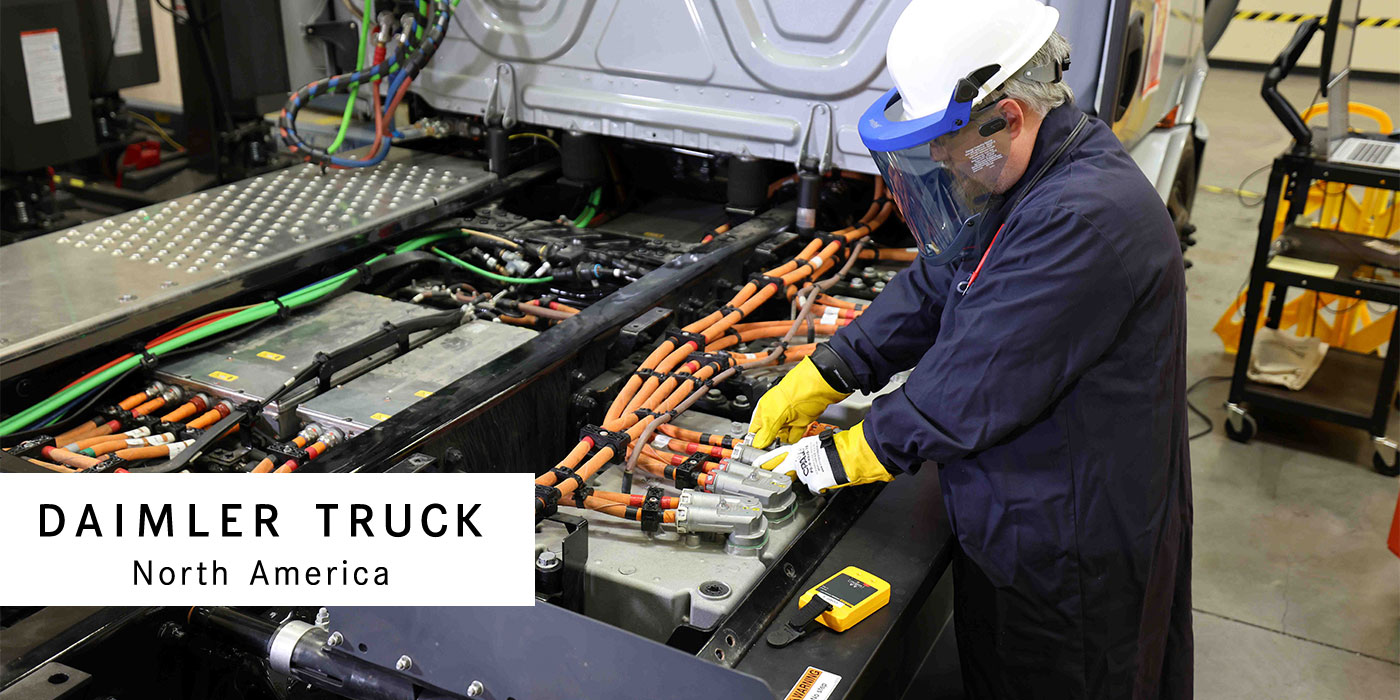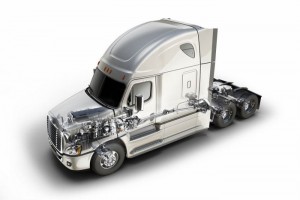
Often times, any topic filled with apprehension can be seen in a new light thanks to a bit of old fashion education. There’s no clearer example of that than the growing interest in 6×2 axle configurations from fleets across the country. In the past, fleets had three main concerns with 6×2 axle configurations: 1. Traction; 2. Tire wear; and 3. Residual vehicle resale value. Today, truck OEs and suppliers have introduced new driveline components and innovations to shift the focus to the efficiency benefits and improved operation, while rolling over old preconceived notions.
Before getting into the details, it’s important to note that when it comes to 6x2s, the truck application is paramount in the decision making process.
“Over-the-road applications will typically reap the most fuel economy benefits from a 6×2 configuration,” said Brad Williamson, manager, powertrain marketing for Detroit, which manufactures both front axles (with ratings from 6,000 to 20,000 lbs.) and single and tandem rear axles, including 6x2s. Tandem axles with ratings from 34,000 to 46,000 lbs., with ratios ranging from 2.41–4.78. Detroit’s 6×2 option is available with a 2.41 and 2.28 ratio rated at 40,000 lbs. “While a 6×2 would still perform in applications where more than 20% of the time is spent off road, in areas where inclement weather is normal [i.e. snow/ice] or if the main application is climbing grades versus running on ‘flatter’ ground—a 6×4 configuration would be more efficient.”
1. Traction
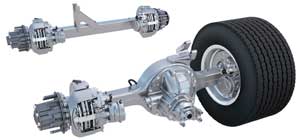
“Some fleets may have tried 6×2 axles in the past by taking a single axle and coupling it with a trailer tube axle for the tag,” said Karl Mayer, director of product line management, North America Drive Axles for Meritor, which sports a portfolio of both single and tandem axles, including the most popular on-highway tractor choices are for 23,000-lbs. rated single axles and 40,000-lb. tandems and the FUELite tandem for 6×2 applications. Ratio ranges for the FUELite are from 2.50 to 4.10. “The single drive axle may have not had the appropriate rating in terms of gearing size. While most fleets likely experienced improved fuel economy, there were many who experienced traction issues because the weight of the load was always split equally among the two axles.”
New, sophisticated 6×2 axle configurations are working with the latest innovations such as electronically controlled air suspensions (ECAS) from the likes of Meritor Wabco and Bendix to address any traction.
“If fleets have a concern about traction, they should select a 6×2 tandem axle with a differential lock that can be used in combination with electronic-controlled air suspension systems such as the new Bendix eTrac system, which seamlessly transfers weight to the drive axle for improved low-speed traction,” said Steve Slesinski, director of product planning, Dana Commercial Vehicle Driveline Technologies. Dana’s line of axle products for commercial-vehicle applications includes single and tandem axles for 4×2, 6×2 and 6×4 configurations. The Spicer EconoTrek tandem axle is Dana’s offering for 6×2 configurations, offered in 21 different ratios for vehicles with a gross combination weight (GCW) of up to 125,000 lbs.
Meritor Wabco’s EACS also shifts the load to the drive axle. “By having additional weight on the drive axle during these events, traction is improved and has approached similar performance as 6×4 vehicles,” Mayer said.
Williamson reported that the Freightliner AirLiner suspension combined with the Meritor Electronically Controlled Air Suspension (ECAS), the 6×2 axle will deliver very similar performance as a standard 6×4 with real world fuel economy benefits.
2. Tire wear
Tires wear no matter what axle configuration you employ but, historically, fleets have worried about the rate of wear more on 6×2 configurations. Much like traction, ECAS helps to improve the rate of tire wear on 6×2 axles. “While tire protection may not be at the same level as 6×4 tandems, most customers will accept increased wear because the tradeoff makes business sense when looking at the weight savings and substantial fuel economy improvements,” Mayer stated.
Williamson agreed: “Tire wear is also a common issue fleets ask about when considering a 6×2 axle configuration. This concern is typically secondary, ultimately because of the fuel economy benefits a 6×2 configuration delivers.”
“While it is true that a 6×2 axle configuration will consume drive tires at a rate of 2.5 to 1, the fuel economy benefits far outweigh the additional tire cost,” said Henry Albert, Owner of Albert Transportation and Team Run Smart Pro, Mooresville, N.C. “If you’re strategic about relocating the drive tires to the tag or trailer axle position once they wear to 10/32, you can significantly improve your operational tire costs. Since a new tag or trailer axle tire starts life at a tread depth of 12/32, these repurposed drive tires at a depth of 10/32 will wear and perform just like a new trailer tire. Also, be sure to use a trailer tire [or a tire with 12/32 of less tread depth] in the tag axle position, as a new drive tire will not wear well in free rolling application.”
Looking at the total cost of ownership for a heavy-duty truck, each fleet would have to consider whether the cost savings in fuel outweighs any tire wear costs. So let’s take a look at the expected fuel economy savings of running a 6×2.
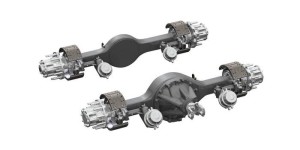
In the “2014 Fleet Fuel Efficiency Benchmark Study” performed by the North American Council for Freight Efficiency, the report found that, “A few fleets shared that they have adopted or are testing a 6×2 package of features, which includes a dead axle, direct drive transmission and wide-base tires, with trailer tires on the dead axle. This combination in one case is showing about 0.4 MPG, or 6% fuel consumption, performance improvement. This combination also delivers weight and cost savings.”
Of course, your fleet’s mileage may vary depending on application, specs, environment and a myriad of other reasons. Dana’s Slesinski stated that simply running one drive axle in a 6×2 tandem versus the two used in a 6×4 tandem can net an efficiency increase of 2% to 3%.
When Detroit unveiled its integrated powertrain with 6×2 option, featuring the Detroit DD15 engine, Detroit DT12 transmission and Detroit axles, it provided a 5% to 7% additional fuel economy improvement above the standard set by Freightliner Cascadia Evolution.
3. Residual vehicle resale value
Truck value is important to fleets as they turn over older trucks for newer models. Although a 6×2 is a deduction, that’s poised to change as more fleets spec the axle configuration.
“As far as residual value concerns, the industry is beginning to adopt 6×2 vehicles more and more, which will lessen the impact of trade-in values; the penalty could even go away as popularity grows,” Mayer said.
Consider this: Dana estimates that approximately 3% of Class 8 on-highway trucks are spec’ing 6x2s. Meritor sees about 4% on-highway class trucks are spec’ing 6x2s and believes the rate of growth to be about 3% to 4% per year, with the rate of adoption being fueled by fleets with positive experiences and improved bottom lines.
“The use of 6x2s has been on the rise for the past several years,” Williamson said. “As the suspension and traction control options get better, more and more fleets are looking at 6×2 configurations as viable options to improve fuel economy. The market is also ready for this change, and while it will not happen as fast as others, we do expect 6×2 penetration to grow in 2015.” /






